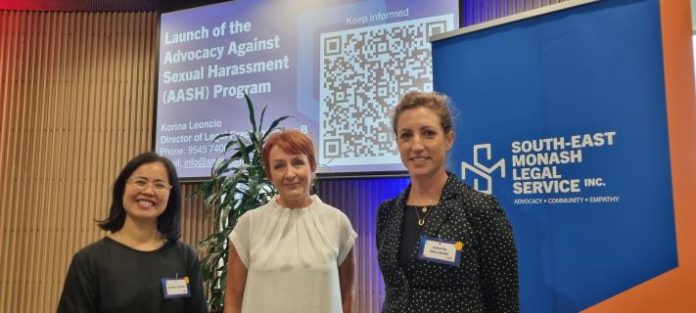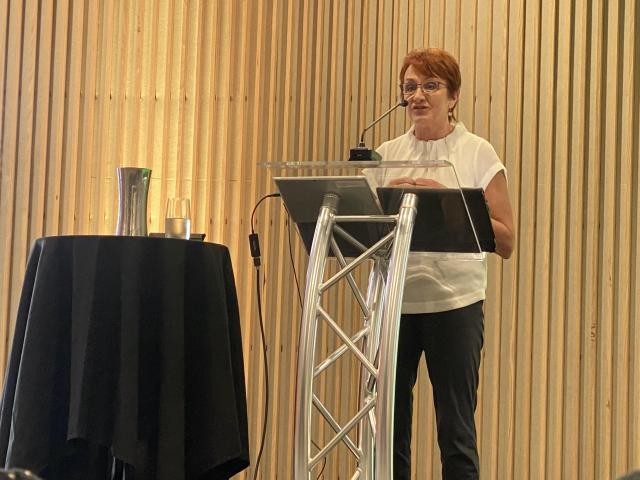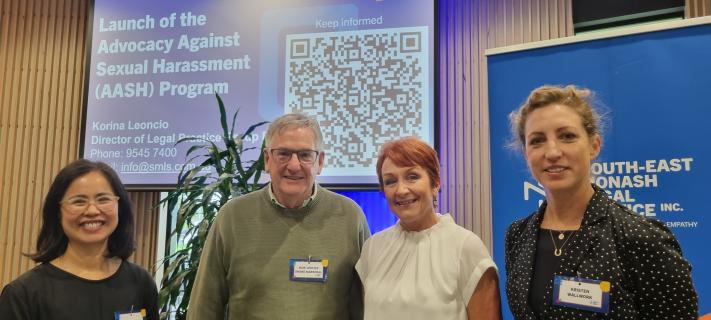
By Cam Lucadou-Wells
Prevalent but too often unreported, sexual harassment in workplaces will be the focus of a free, confidential legal help service.
South-East Monash Legal Service (SMLS) launched its Advocacy Against Sexual Harassment (AASH) program at Bunjil Place on 1 February.
The service will help more employees such as Layla (not her real name) who was preyed upon by a manager at a small family-run business.
After months of telling him to stop his unwanted touching and lewd comments, Layla felt she had no choice but to resign, legal practice director Korina Leoncio said.
SMLS negotiated a compo payment for Layla from the “obstructive” and “unwilling” employer
“What was probably most striking … was the employer agreeing to undertake sexual harassment training and improve its processes.”
AASH provides free, confidential legal advice, ongoing assistance and advocacy, Ms Leoncio said.
“We aim to empower clients to make informed decisions … and stand with them through the process if they want to take it further.”
The big hurdle was “getting clients through the door”, she said.
“It seems that one of the last places a person would approach for help is a lawyer. Only some 4 per cent will come to seek a lawyer for advice.”
Victoria’s Public Sector Gender Equality Commissioner Niki Vincent pointed to research showing 41 per cent of women and 26 per cent of men experienced sexual harassment in the workplace in the past five years.
“It is an incredibly prevalent thing that occurs.”
Yet, there was also “incredible” under-reporting. Just 17 per cent made a complaint.
Males were the most common perpetrators (79 per cent).
Research showed it was most likely to occur in male-dominated and rigidly hierarchical workforces.
Most notably, the transport industry, police and emergency services as well as health services.
Gender inequality underpinned sexual harassment as well as other forms of violence against women, Dr Vincent said.
It was disproportionately inflicted on workers under 30, LGBTQIA+, Aboriginals and Torres Strait Islanders, workers with disabilities, migrants, temporary visa holders and Culturally and Linguistically Diverse backgrounds.
She said many complainants were in insecure, precarious employment and did not understand their rights.
“The vast majority of complaints came to me about sexual harassment after it was reported internally to their organisations and those complaints were handled ridiculously badly.”
Victoria’s “world-leading” Gender Equality Act aimed to do something about sexual harassment, Dr Lindsay said.
It would stand as a model to “create real change in driving gender equality”.
“Goodness knows, we’ve been waiting far, far too long for that. I think a lot of us are pretty sick of all of the advocacy going nowhere or at a snail’s pace.”
Under the Act, employers now had a “positive duty” to promote gender equality, and to undertake regular audits of its workplace.
They must report to the Commissioner on their progress in implementing their gender equality action plans.
The Commissioner’s website publishes gender audit data and action plans from 300 Victorian public sector workplaces including local councils.
In its own survey data just 4 per cent of women and 3 per cent of men who experienced sexual harassment made a formal complaint.
Dr Lindsay said more regular training was needed in workplaces, including bystander intervention training.
“The way an organisation handles sexual harassment is crucial to seeing more people reporting.”
AASH is funded for four years by the federal National Legal Assistance Partnership. Details: smls.com.au









